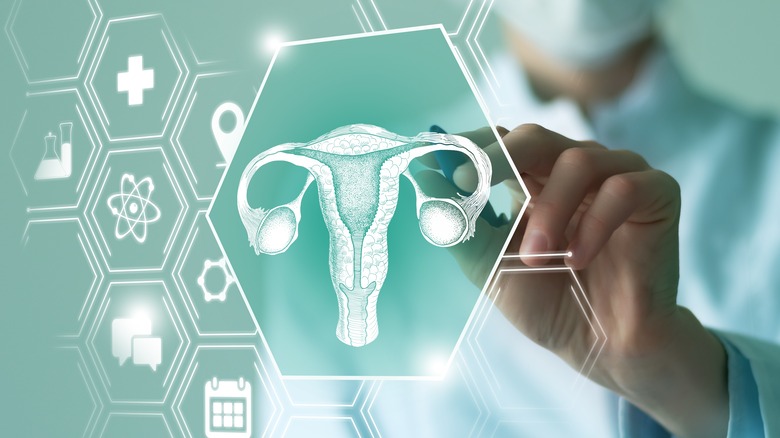Researchers Believe This Is When Cervical Cancer Could Become A Thing Of The Past
Cancer looms over us all like a giant, ominous cloud. It seems unavoidable, and while today that may be, in the future, it may not. A new study predicts how and when cervical cancer will no longer be the issue it is today.
According to the American Cancer Society, 4,280 women will die from cervical cancer in 2022 alone. The reason is that there isn't a cure for cancer yet, but you can be sure we're working towards one. Cervical cancer death rates have actually been worse in the past, but thanks to screening with pap tests, cervical cancer can be predicted or discovered early (via Cleveland Clinic). The test takes cells from the cervix to check for abnormalities that indicate cancer. A healthcare provider will perform Pap smears, which are recommended for women beginning at 21 to receive every three years.
In addition, we now have the human papillomavirus (HPV) vaccine, which can protect against the group of viruses that cause several types of cancer, including cervical cancer (per the National Cancer Institute). There are three effective HPV vaccines, quadrivalent, 9-valent or nonavalent, and bivalent, that each target a different number of types of HPV viruses, reports UpToDate. Gardasil 9 is one of the most well-known of the 9-valent or nonavalent HPV vaccines available(via National Cancer Institute). It's a combination of screening and vaccination that researchers are focusing on in new projections for when cervical cancer can be eliminated. What's more effective, screenings or vaccinations?
Less screenings can reduce unnecessary harm
In 2018, the World Health Organization (WHO) called for the end of cervical cancer by setting specific goals for vaccinations, screenings, and treatment for women worldwide. They suggest 90% of girls be HPV vaccinated by 15, 70% of women be screened by age 35 and again at 45, and 90% of women with pre-cancer or invasive cancer treated or managed. The WHO believes death rates from cervical cancer are so high due to a lack of these three aspects in low and middle-income countries where screening has not been well implemented and public healthcare isn't readily available.
In the recent study, the organization found a fine balance between screening and vaccinations that needs to occur to help ensure cervical cancer's elimination in a timely fashion, specifically by 2042. While screenings are emphasized — as they are more effective than vaccinations at preventing incidences of cervical cancer — screenings aren't without risk. These post-screening issues, like anxiety, unnecessary treatment of lesions, overdiagnosis, or preterm birth, must be reduced while continuing to push forward on the goal of eliminating most cervical cancers within the next 20 years.
While strictly sticking to these strategies would help cervical cancer elimination by 2038, it may also lead to increased harm from excessive screenings and related dangers. The compromise researchers determined is to change lifetime screening invitations from five to two for those vaccinated, while maintaining a 90% nonavalent vaccination rate for boys and girls.


